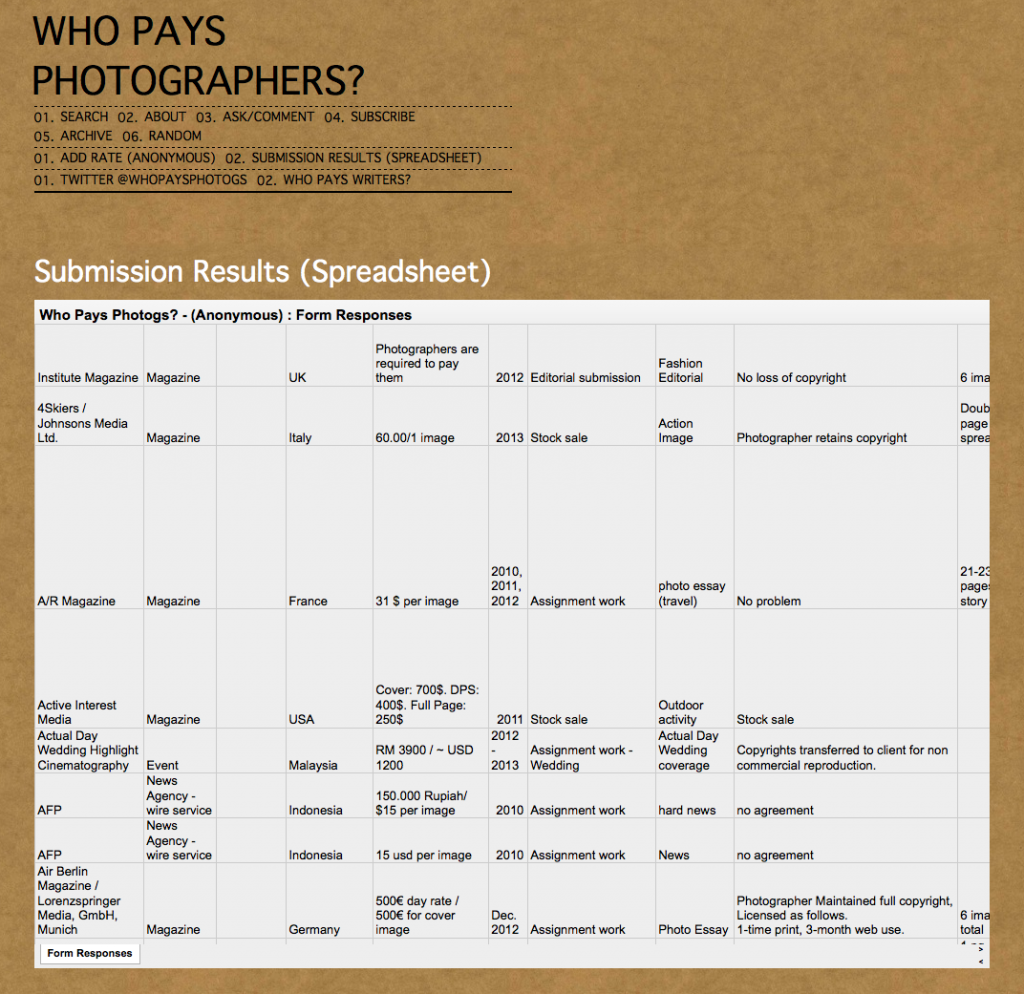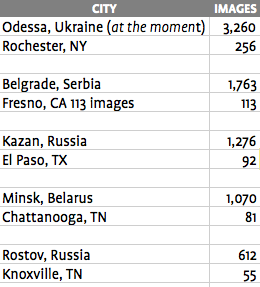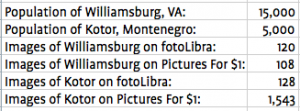Posts Tagged ‘fotoLibra’
fotoLibra on Instagram
April 28th, 2017fotoLibra‘s Home Page images have always been a source of joy to picture buyers and general browsers alike.
We’ve had only one lingering worry. Because computers have horizontal screens, all our chosen images had to be Landscape.
And we’ve got just as many superb Portrait images, which we couldn’t show you.
Then we thought, hey, Instagram works well on mobiles and cellphones and tablets, and people tend to hold those things in vertical mode, so why don’t we upload some of our great Portrait format images to Instagram?
Good plan, we thought, patting ourselves on our shapely backs. So here goes. The first one went up earlier this week. Because it won’t click through to the fotoLibra site, each one will be credited as follows:
“Film helicopter: Snow White and the Seven Dwarfs by Kevin Fitzmaurice-Brown. You can licence this image and millions more through fotoLibra.com. #fotoLibra”
Of course they won’t all be photos of Film helicopter: Snow White and the Seven Dwarfs by Kevin Fitzmaurice-Brown. There’ll be a different picture every day, probably including one of yours at some stage. But each image will finish “You can license this image through fotoLibra.com.”
So please go to Instagram, search for fotoLibrarian, and please LIKE every picture you see!
A word of comfort: each image will be small size, lo-res and watermarked so ongoing opportunities for illegal usage have been minimised.
Real people
May 26th, 2016It’s hard to deal with real people. They smile, they laugh, they have fun, they have temper tantrums, they storm out of the room, they are unforgivably rude and then utterly contrite. They make no sense.
Sometimes they don’t do the work they’re employed to do. For no reason at all.
That’s why, when you send an email to, say, customer services or Support for a large organisation, you’ll get an email back almost the instant you click the Send button.
Now THAT’s customer service. No human involvement whatsoever.
fotoLibra only employs real people. It’s hell in here, folks.
Which is why we’ve always promised we will answer emails sent to Support within 24 hours (but give us a break at weekends).
Your support query will have been read by a human being and answered by a human being. If you haven’t heard back from us within 24 hours, there’s a simple reason: We Did Not Receive Your Email.
It happens. It happens more often than we would like. Just as letters used to go missing in the post, so emails can vanish into the ether. Sometimes it’s the fault of the spam checker at our email provider — which pulls out 400 junk emails a day from my account alone — and sometimes it just happens.
If you want to speed up our response time, put your Member ID in the subject line. (Hint: Sign in> Details> Member ID)
If you haven’t heard from us within 24 hours, send it again.
From one real person to another!
Money For Photographs
August 1st, 2014by Gwyn Headley
Managing Director
Tags: Cape Town, fotoLibra, Greg Lumley, payments, photo, sales, Who Pays Photographers
Is it August already? Where does the time go? And where does the money go?
In a week where Greg Lumley, a South African photographer, made the news by offering a unique ultra-hi res print of his gorgeous photograph of Cape Town for $35,000, an influential photo magazine despondently commented that “Photography as a business is competing in a race to the bottom. Photographs are regularly devalued by people who steal them, agencies that sell them for a pittance, and photographers who are willing to work for free.”
It is very true that it’s a rough time to be in the picture sales business. Clients have lost interest in the quality of the image; their sole concern is price. National newspapers are a closed shop — management won’t allow picture desks to use anyone other than their contracted agency, unless the paper’s readers give them up for free, an acquisitions policy energetically pursued by the BBC among many others. And the agency’s photographers are up in arms because their images are being traded for pence.
Meanwhile photographers spend more and more on kit which makes their already great images even better, and still no one is buying. Tiny publishers who 20 years ago would come cap in hand for permission to buy from the lordly picture libraries now want to pay prices for RM images that you’d expect to see on a £50,000 a month contract. Mind you, they don’t get them; not from us at any rate. It’s like being bullied at school. Once they start picking on you, even the weediest gurly will fancy his chances chiz chiz.
Yesterday I came across this eye-opener of a website, Who Pays Photographers?
It’s a crowd-sourced spreadsheet of publishers around the world who pay — or don’t pay — for photography. It makes riveting, if clunky, reading. Everyone who’s ever sold a picture, or tried to, should have a look at this. And contribute, if you can.
The site owner writes: “[This is] a space to list how much — and how little — magazines, newspapers, websites, NGOs and corporations pay photographers. Editorial, commercial, advertising, entertainment — any and all presented. Listing based on anonymous submissions. This is intended as an exercise in sharing, rather than shaming — but feel free to warn your fellow photogs about deadbeats.”
The creator of this fascinating site prefers to remain anonymous, but gives credit for the idea to Manjula Martin, who devised the ‘Who Pays Writers?‘ website. I’d remain anonymous too if I came up with the bowel-tinged background colour of the site. Maybe it looks OK in Windows. It certainly doesn’t on a Mac.
I remember reading last year on several photographic forums that more than one American photographer was claiming recent $10,000 sales for book front cover image usage. But to a man they were too bashful to reveal the names of the books, the publishers, or even to show off their expensively purchased images.
Oddly, those sort of claims don’t appear on the Who Pays Photographers? site. But reports of offers of “picture credits” abound.
DON’T give your pictures away for a credit. You know what a credit is worth. As my friend Mike Shatzkin used to say, “That, and 10¢, will get you a subway token.” I’ll update him — “That, and £4.70, will buy you a tube ticket to travel the 260 metres between Covent Garden and Leicester Square.”
Shatzkin’s is pithier. Mine is scarier. But they’re both true.
The BAPLA Quiz
March 20th, 2014by Gwyn Headley
Managing Director
Tags: ach-y-fi, ambrosia, Arcadia, bacchanalia, BAPLA Quiz, Beverley Ballard, British Library, Camera Press, Charlotte Lippmann, Damien Gaillard, fotoLibra, Four Corners Images, goddesses, gods, Gwyn Headley, hoi polloi, ivory towers, Martyn Goddard, Mary Evans, National Portrait Gallery, nectar, nymphs, Offside Sports Images, picture library, satyrs, Steve Lake, stock agency, Superstock, sylvan glades, The Bridgman Art Library, Yvonne Seeley
Life working in a picture library isn’t just wine and roses, you know. There’s only so much disporting ourselves in sylvan glades we can get through in a day, and there can be such a thing as a surfeit of ambrosia and an excess of nectar. From time to time we are forced to descend from our ivory citadels and face the gritty reality of everyday life, away from our cloistered, chauffeured and charmed lives, and deal with Ordinary People, who have to get by on Wine. And Beer. Occasionally we even have to confront what we believe is called Hard Work.
Such a day came yesterday evening, in the guise of the BAPLA (British Association of Picture Libraries & Agencies) Quiz. Goodness, we had to work! It was so-o-o Hard! A nasty man kept asking us difficult questions — a proper interrogation it was — and he ignored me when I plaintively demanded more nectar and ambrosia, making me drink Beer and Wine instead, and asking me more hard questions. I won’t be doing that again in a hurry.
From a human PoV this event was much like a pub quiz, except the participants were all picture libraries and picture researchers; the nymphs, satyrs, gods and goddesses of the image world. We congregated at the Yorkshire Grey in Theobalds Road, hard by Gray’s Inn in the centre of London, on Earth.
All the teams had exotic names, coincidentally mirroring the names we use back home in Arcadia.
Graham, Llinos and Jacqui couldn’t be coaxed from their dreaming spires, so the fotoLibra team consisted of:
- Charlotte Lippmann, Picture Researcher
- Beverley Ballard, Picture Researcher
- Martyn Goddard, Photographer
- Damien Gaillard, fL Technical Development Manager
- Yvonne Seeley, fL Marketing Director, and
- Gwyn Headley (that’s me), fl MD.
Each team had to have a minimum of two picture researchers, and so we are very grateful to Beverley and Charlotte for putting up with us.
The questions were compiled and enforced by Steve Lake of 4 Corners Images, and he was merciless. No, implacable. No, unrelenting. Yes, all three, and more.
For example, we were shown Photos of Celebs When Young. We got 3 out of 20 right. Who on earth knew that José Mourinho used to have horns?
Then followed questions of every sort, such as “What does the term Lyonnaise mean when applied to French cooking?”
We had a secret weapon here. Damien, our TDM, is from Lyons, and his brother is a top chef in Paris. So “Potatoes,” I said decisively. “Cream,” said Bev. Nothing, said Damien. We left it blank.
The answer was Onions. “Onions? Everything in France has onions!” complained Martyn.
Finally the results came in. There were tears. There was laughter. There was gross injustice. To show how remorseless Question Master Steve was, he slashed 20 points from the British Library for writing ‘Euston Square’ instead of ‘Euston Road’ .
fotoLibra only came fourth, despite our clear superiority. We would have won by a large margin if the other teams hadn’t known more than us. Not fair.
The official results (subject to scrutineering) were
- The Bridgman Art Library
- Mary Evans
- Offside Sports Images
- fotoLibra
- Camera Press
- National Portrait Gallery
- British Library
- Superstock
So here we are this morning, back in our ivory tower, re-insulated from the οἱ ολλοί, gazing out at the world (ach-y-fi! nasty, dirty place!) and I’m contemplating a quiet bacchanalia or two to restore my flagging spirits.
Ah! Here comes Pan! I’ll have to go — gotta dance, gotta sing. See you later!
This is posted in an effort to placate Owen Elias, who wrote about my last blog “Another moaning tirade. Do you never have anything positive to say?”
The Russians Are Coming!
March 12th, 2014by Gwyn Headley
Managing Director
Tags: $1, 25 million, Belgrade, Chattanooga, dollar, El Paso, fotoLibra, Fresno, images, Kazan, Knoxville, Kotor, Minsk, Montenegro, Odessa, picture library, pictures for a dollar, Rochester, Rostov, Russians, stock agency, Williamsburg
25 million images for a dollar each!
Yet another ‘stock agency’ has bulk-emailed the world (why should spam trouble them?) to tell us we can buy images from them for a dollar each.
Of course you can’t actually buy a picture from them for a dollar, despite what they promise. You have to start by paying a minimum of ten dollars, at which point they’ll throw in nine extra pictures (which you may or may not want) for free.
The pound, the euro, the yen and the rouble don’t concern them; they only want your dollars.
The business model is to blind buyers with price and quantity, and gloss over content and quality. Pile ’em high, sell ’em cheap. It’s a well-used model.
But talking of content and quality, the balance of image subjects seems wrong for a website which appears to be US-based and aimed primarily at American buyers. Compare these eastern and western cities, all with populations around the million mark. Here are the number of images Pictures For A Dollar (not its real name, natch) has of each location:
As for my headline, I have no idea if this site has anything to do with our Russian friends. But there does seem to be a definite Eastern flavour to the content. As the table above demonstrates, there are ten times as many images of former Soviet bloc cities than of American cities. Which is very useful if you are publishing to the Eastern European market.
Check out these two tourist destinations:
Where did this Pictures For A Dollar site acquire its images, do you think? From all the figures quoted, it certainly looks more Eastern than Western.
I assume they own all these images, so they don’t have to pay the photographers. Therefore all the business costs are pumped into marketing the static stock. There is no indication that there will be new additions to the 25 million images they hold — the website baldly states “Pictures For A Dollar is not accepting contributors at this time.”
Why does this upset me? Because this has nothing to do with photography. Photographers are not welcome on this site.
This is a commodity sale, which will directly affect the livelihood of yet more photographers. I very much doubt that the photographers who supplied the majority of images which ended up on Pictures For A Dollar are going to see a cent for their work. And I don’t think that’s fair.
What worries me is how can a picture library (British usage) or stock agency (American usage) like fotoLibra compete?
I hope it will be by providing well-keyworded, precise, high-quality, up-to-date AND historical images that people actually want and need, not a dubious flytip of cheaply acquired bulk collections that might pass at a pinch.
Or do you have other ideas?
Why do stock photos look like stock photos?
February 28th, 2014by Gwyn Headley
Managing Director
Quora is an interesting web site. Questions are created, answered, edited and organized by its users. And its users seem more intelligent and less abusive than the average troll one encounters online.
Here’s a good one: What are some of the reasons that stock photos look like stock photos?
This is an excellent question. Alas, so far there are only four answers, none of them particularly illuminating.
Let me have a go. First of all, let’s forget photography and look at economics — the law of supply and demand. The four basic laws of supply and demand are:
- Demand increases, supply remains unchanged: a shortage occurs, leading to a higher equilibrium price.
- Demand decreases, supply remains unchanged: a surplus occurs, leading to a lower equilibrium price.
- Demand remains unchanged, supply increases: a surplus occurs, leading to a lower equilibrium price.
- Demand remains unchanged, supply decreases: a shortage occurs, leading to a higher equilibrium price.
Unfortunately in the picture library / stock agency business we have involuntarily created the fifth law of supply and demand:
- Demand decreases, supply increases dramatically: a massive surplus occurs, leading to a far lower equilibrium price.
That’s where we stand at the moment. Twenty years ago if you wanted a sunny photograph of a couple running happily down a beach hand-in-hand, you either commissioned a photographer at considerable expense, or you trawled through transparencies at a picture library (and paid a hefty fee for doing so). Now they’re so common you can scarcely give them away.
I went into the Spar store in Harlech yesterday, hoping to buy a packet of frozen broad beans. What they had in the freezer was:
- Frozen oven chips
- Frozen roast potatoes
- Frozen potato wedges
- Frozen hash browns
- Frozen French fries
- Frozen jacket potatoes
- Frozen Smiles (??) potatoes
- Frozen garden peas
That was the extent of their frozen vegetable range. Now I’m as anti-eating green things as any ordinary man can be (although peas and broad beans are sort of OK) but even I felt that this was an overwhelming bias in favour of potato-based products.
Potato-based products are heavily marketed, so people buy them. At first we don’t notice the broad bean chicks have been ousted from the freezer nest by these cuckoo brands.
It’s the same with microstock and rights-managed images. Microstock is heavily marketed, like supermarkets, with a loss leader — $1 for an image! And that’s all that buyers remember, until they’re suckered in to an annual deal where they’ll pay as much for their images as if they’d bought them from us without any trade agreement. They don’t notice they end up paying at least the same, and probably more.
The boon and the benefit of Microstock is that everything has been ironed down to the lowest possible common denominator. Welcome to a perfect world, where everyone lives exclusively on potato-based products and sugary drinks, yet keeps a trim figure and teeth like the grille on a Cadillac. Nothing has ever gone wrong in these people’s lives, and that’s what the client wants. So endless numbers of photographers endlessly reproduce the same image with infinitesmal variations, like this:
Oops — the last one is embarrassingly much better then the rest. Oh, it’s not a microstock image at all, it’s a fotoLibra Rights Managed image (thank you, Peter Phipp!).
When I was a kid we rebelled against conformity by growing long hair and wearing blue jeans. We all wanted long hair and blue jeans. We all looked the same. We conformed.
The point is that stock photos look like stock photos because that’s what the market wants. Conformity. And potato-based products.
You get what you pay for.
So This Is What We’re For
January 8th, 2014by Gwyn Headley
Managing Director
We received a cheery sales enquiry this morning:
Good morning,
I work for the Social Security Administration (SSA) in the Dallas Region. The Dallas Region is comprised of Social Security offices in 5 states (New Mexico, Oklahoma, Texas, Louisiana and Arkansas). The Dallas Region is separated into 6 parts called Area’s [I think he means Areas]. One such Area has Social Security Offices in two states (Oklahoma and Arkansas).
We are creating a banner for the Area front page that would represent 2 states (Oklahoma and Arkansas) and we would like to use one of your pictures as part of the banner to represent the State of Arkansas. This front page would exist on a Secure intranet and would only be visible to Social Security employees. This Intranet is not accessible to the general public or anyone outside of the Social Security Administration and serves as an information portal for SSA employees.
Please consider allowing us to use your image shown. As a government entity we cannot pay for rights.
Yvonne was on it in a flash:
Hello Tony
Many thanks for your message and for your interest in one of our images. I’m sorry to read that as a government entity you can’t pay for rights because, as a stock agency, our business is selling usage rights for our many contributors.
I regret that I can see no reason why we should give you free rights to use one of our images and wish you luck in persuading someone else to give away their work for no reward.
Regards,
Yvonne Seeley
What a model of restraint. It’s fortunate she responded before I had a chance to vent my spleen, otherwise Anglo-American relationships could have been irreparably damaged.
This scenario is becoming increasingly common. I wrote about it in a blog last November, Give Us Your Work For Free. Yvonne was more concise and to the point than Whitey. Why should anybody, in any organisation, in any country, anywhere in the world, expect to be paid for what they do and yet expect you and me to hand over the fruits of our investment, creativity and labour for nothing? It’s contemptuous, patronising and demeaning.
Mind you, Yvonne has form where this sort of behaviour is concerned. Some years ago when she was working for BASF and Sir Peter Hall was Director of the National Theatre, Hall’s secretary rang up to order 10 reels of recording tape. Yvonne’s question was to be expected: “To whom shall I send the invoice?” In a flash Hall (as he was then) was on the phone, fulminating “Don’t you know who I am? I’ll have your job for this!” Yvonne answered evenly, “I don’t think so. Now do you want to buy these tapes or not?”
Collapse of stout party, as they say.
Only one good comes of this. It shows that a picture library set up in a remote corner of North-West Wales can be seen and used by a US government department.
The next step is to get them to pay $600 for our lavatory seat. Older readers will recall the reference.
The New fotoLibra Website
December 16th, 2013I’ve been on both sides of the desk at publicity meetings when the response to the question “What’s new?” is “We’ve got a new website!”
Hearts sink all round. The PR company’s, because no journalist has bought a New Website story since 1993, and also the client’s, because he can see this magnificent, radical, earth-shatteringly great new website isn’t cutting the mustard with the very people he’s paying to tell the world how wonderful he is.
Well — fotoLibra has a new website! This is Version 6.0, launched at noon today. It’s evolutionary rather than revolutionary, so old fotoLibra hands won’t be fazed by unfamiliar procedures — but explore a little further and you’ll find a wealth of new and useful features for both buyers and sellers.
For instance, you no longer have to sign in to check the price of an image.
It’s a ‘responsive’ site, which means it works equally well on smartphones, tablets, laptops and desktops.
It’s bigger, brighter and faster, using the latest HTML5 features, which means you’ll need to upgrade your browser to appreciate them fully. You can navigate through the site using left and right arrow keys. There’s a new drag and drop image uploader with thumbnail generation. Search results default to larger thumbnails. There’s a lot more.
Please take it for a test drive:
http://www.fotoLibra.com.
And we would love to hear what you think about it, whether it’s bad or good.
Being a small company, fotoLibra actually listens and responds to all its contributors, unlike some others we could think of. We’ll respond to your comments and queries, and if you have ideas for further features we could offer in the future, let us know. If we like them and can do them, we’ll incorporate them.
A note to our dinosaur friends — fotoLibra 6.0 won’t work on the no longer supported web browser Internet Explorer 7, and works (but looks slightly odd) on IE8. Please upgrade to IE11, or try using Safari, Firefox, Chrome or Opera.
We hope you enjoy using the new fotoLibra Version 6.0. We’ve put a lot of hard work and love into making it as intuitive and user-friendly as we can. Please comment!








